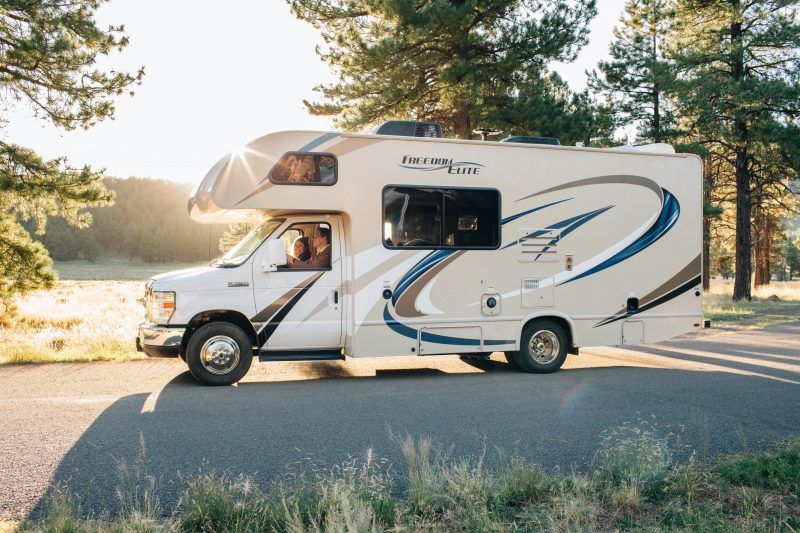
The cost of RV travel can add up quick, but strategic and patient planning make hitting the road possible on any budget. RVing is one of the most economical ways to travel, and thousands are able to enjoy RV living while keeping their finances in check.
In order to RV on a budget, it’s important to have an idea of how much you’ll be spending, whether full-time RVing or just taking your motorhome, travel trailer or camper van out a few times a year. When estimating how much you will need, consider how you’re financing your RV, annual maintenance costs, campground fees, gas prices, and food costs. As you plan out the costs of your RV travel, below are some ways you can save money while traveling in an RV.
Create an RV travel budget and stick to it

The first tip for RVing on a budget is to understand how much you will be spending overall. Some of your costs are going to be fixed, like RV payments, insurance, etc. Make sure you are getting the best possible rates for your fixed cost by price comparing insurance coverage. America’s Choice Insurance Partner is an industry leader not only in RV insurance, but in home and auto as well. One of the biggest benefits of RV travel is that you largely control the cost. Whatever your destination, timeline, and must-see activities are, you can make it work within your budget.
Start by figuring out how much money you are willing to spend, subtract your fixed costs and then prioritize your flexible costs. Do you want to travel frequently? Gas prices are high, and could get even higher. Consider taking shorter distance trips to offset the rising costs. Do you need to stay at campgrounds with hook-ups? Site fees are likely going to be more expensive than rustic campgrounds or sites with limited services. Once you know what’s most important to you, you can pick the areas where you can cut back.
RV Maintenance: Maintain your home away from home
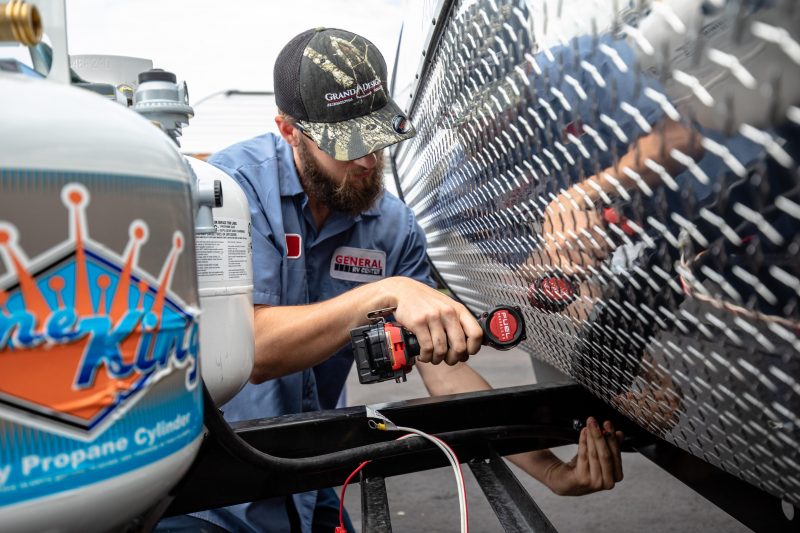
Regardless of what they drive, responsible RV owners all have one thing in common. They know the best method of avoiding costly repairs is preventative maintenance. Putting it off could subject your wallet to towing fees, lost time and hastily-needed repairs that often cost substantially more than they would if addressed sooner. Regularly servicing your RV at home can cut costs substantially, but not everyone has the mechanic skills and knowhow. There are many videos online that can teach you how to fix simple repairs, and the General RV Blog features articles on RV how-to. But if you’re trying to avoid bigger issues, find your nearest General RV dealer to learn more about having your RV professionally serviced. With over 500 service bays across 14 locations, it’s easy to schedule an appointment with General RV to have your RV serviced before your next road trip.
Find the right campsite at the right price
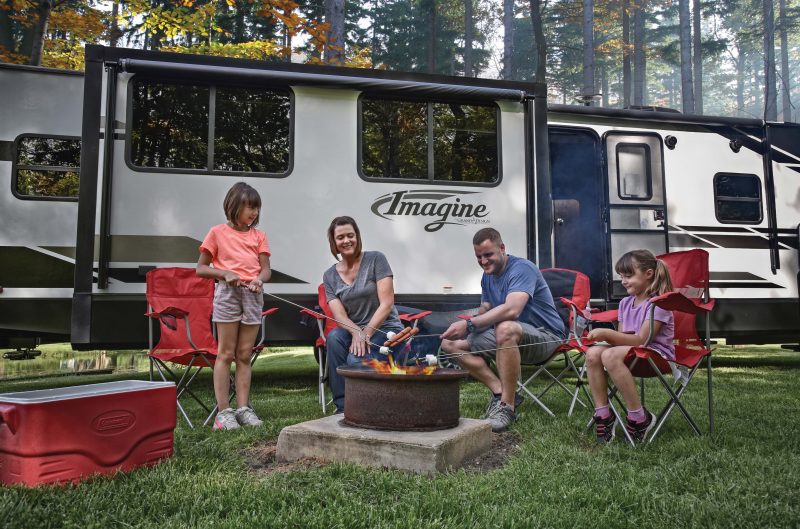
Another substantial cost in RV travel is paying for campsites. When you’re RVing on a budget, these costs can add up quickly. The cheapest way to camp is by boondocking, which is also known as “dry camping” without electricity or water hookups. Typically, boondocking RV sites are on public land and are either very low-cost or completely free. You can search the Bureau of Land Management (BLM) and your state Wildlife Management Area (WMA) for public lands that offer cheap camping fees or free camping options. You also get the added benefits of more flexibility and better views when boondocking. It’s true that traditional RV camping has its benefits, like access to running water and being able to do laundry. However, you can’t beat the freedom that comes with boondocking, and it’s far gentler on the RV budget as well.
Along the same lines as boondocking, sometimes the best activities are the ones off-the-beaten-path. National parks, beaches, and theme parks are popular for a reason, but they also come with substantial expenses. Admission costs, parking fees, and pricey food can quickly bust an RV budget. If you plan ahead, you’ll find plenty of low-cost and totally free activities along your route. As a bonus, you’ll probably end up discovering some awesome activities and places you would never have known about otherwise!
Mobile apps help ease pain at the pump
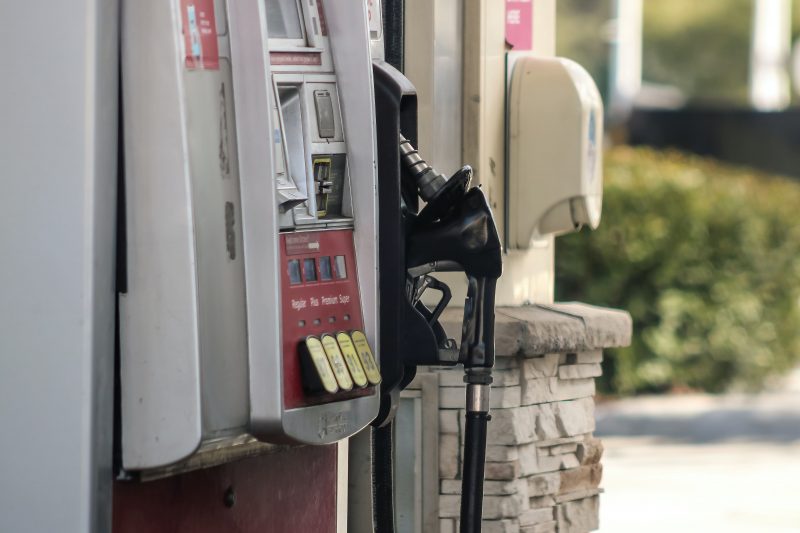
Fuel is one of the largest expenses (if not the largest expense) in any RV budget. Prices at the pump can be unpredictable, and could potentially make or break your RV budget. Luckily, there are several tools and apps designed specifically to help lower fuel costs. Waze will help you avoid traffic as much as possible, so that you won’t burn gas parked in the middle of a highway. GasBuddy and GasGuru both display real-time prices at gas stations near you, so it’s quick and easy to find the lowest-cost fuel while you’re on the road. If you regularly shop at a grocery store that offers fuel loyalty points, you can usually combine those savings with these apps! If you travel in an RV regularly, you may also want to consider getting a fuel credit card or a cashback credit card that offers incentives for fuel purchases.
Whether you’re towing or driving your RV, AAA recommends not exceeding 60 mph. Any faster than that, and you’re probably wasting fuel. So enjoy the drive, and give people a nice wave as they pass you on the highway. Camping closer to home is another option to consider when gas prices are high. Many RVers will stay within 150-200 miles of home when gas prices rise, and adjust travel plans accordingly when they eventually fall.
Save on food costs with pre-planned meals
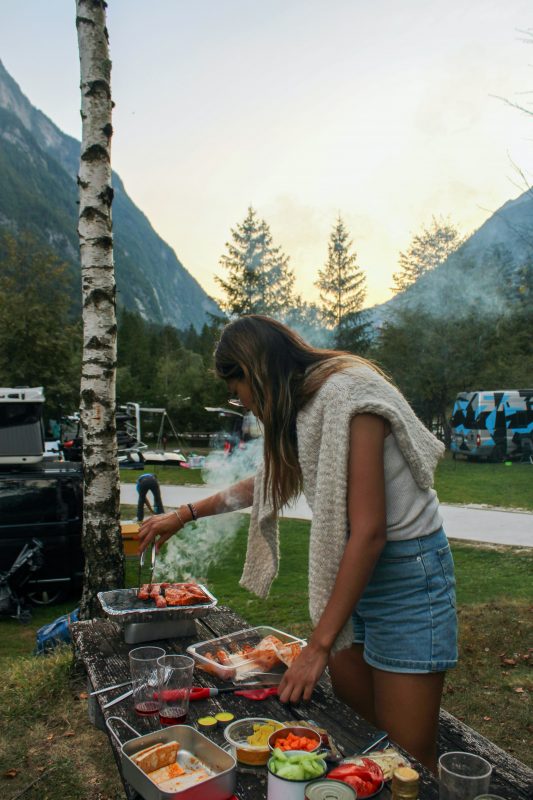
It’s no secret that eating in (even if “in” means outside your RV) is far more affordable than eating out. One of the biggest problems people run into while traveling in an RV is getting caught eating out too much. RVs typically come with a refrigerator, gas cooktop, and microwave; everything you need to make all your meals “at home.” Take advantage of that!
Before you hit the road, stock up on groceries and other road trip essentials. Similarly, think long-term when you’re planning dinner. Make meals that are easy to reheat so you won’t have to dedicate too much daily time into cooking. Even if storage is at a premium, you can cook recipes that do “double-duty,” so you get two or three different meals out of the same basic ingredients. For example, get all the fixings for tacos, including lettuce. Make tacos one night and taco salads the next!
If you are dreaming of hitting the open road, don’t be scared by the thought of spending money. Remember, there are several ways to minimize costs and make RVing on a budget even more affordable. Subscribe to the General RV Blog and check out more helpful advice to make RVing the relaxing, enjoyable experience it should be.